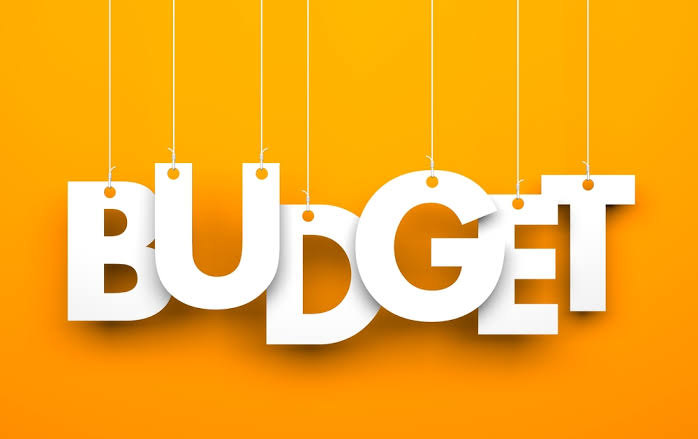What is Personal Finance? How to become Rich? -15 FAQs

1. How do I create a budget and stick to it? – Personal Finance

Personal finance is one of the most important subjects, one should learn about. There is not academic discipline in the name of personal finance.
Process to create a budget
- Calculate your net income: Net income means the amount your get in hand after all types of deductions. May be your gross salary is higher, however, the net income can be much lower depending on your liability, facilities you are availing, employer policies, tax deductions etc.
Categorization and realization of spending
- People can be rich enough if they have no spending or expenses, but they have certain liabilities to lead a life. Now, expenses can be three types i.e. fixed expenses, emergency expenses, and expense for enjoyment.
- Track your spending categorizing the expenses, you can your pen paper, any app or spreadsheet to track them. In some bank or credit card statement, the expenses are categorized, but they can be different from your categorization, so enlisted them as per your convenience.
Make a realistic plan for budget
Many people think, they will work the hardest work for the next 6 months, that they have not done before. The decision is applicable, however, most of the people fails to perform his/her best for the entire duration you set. Similar, in finance also, whatever goal your set make sure you can stick to it keeping in mind the emergency expenses or other non-recurring expenses.
In this context you can follow the 50/30/20 rule:
The 50/30/20 rule is a budgeting technique that tells in the percentage of spending one should do to maintain a stable financial position. Here is the breakdown:
- Expense Needs should be sticked to 50% (i.e. Rent or mortgage, Car payment, Utilities, Groceries, medicine, travelling etc)
- Expense for Wants should be sticked to 30% (Streaming services, Shopping, Savings or Debt)
- One should save 20% for emergency (Retirement, Child’s education, Credit card payments)
How to stick to a budget?
Sticking to a budget is just another name of financial discipline. However, to be financially Stabe and stress-free one should follow the discipline. Here is the process to stick to a budget:
- Keep the budge real: Life is not going to follow the same patter as today. So, if you think that you can save 90 percent of your income, and only 10 percent will go for your expense.
- Set up auto drift: In the auto drift facility, the money will be deducted straight form your bank account in every month or so to the recurring expenses you made. However, active this facility toward the spends that are actually needed like for emergency fund or for investment.
- Learn to say ‘No’: Someone may tell you good investment plans in stocks of mutual funds to invest, buying lotteries to shine your future, influence you to buy fancy dress or bike or car. In such situation, think practically and learn to say ‘No’ if you are not aware of it.
2. What are the best ways to save money? – Personal Finance

- Tracking of expenses: At first track minutely the expenses you made in a month. There may be some recurring expenses, some emergency expense, entertainment related expenses. Now, categories these expenses and enlisted in a spreadsheet or in paper as per your comfortability. This would help you to analyze where the expenses can be cut or increased as per demand.
- Set savings goals: The most successful investor Warren Buffet advised that “Don’t save what is left after spending; spend what is left after saving”. So, set the goal how much percent of your income you can save considering all the factors. You can use 50-30-20 rule while setting goals for savings. Now, categorized the savings goals in two parts as follows:
- Short-term goals: Short-term goals which are set up to 3 years, like Emergency fund (three to nine months of living expenses)
- Long-term goals: Long term goals which are set for more than three years like Down payment on a home or retirement plans etc.
3. How much should I save for retirement? – Personal Finance

There is no specific amount that can be marked as the perfect amount for retirement. However, it totally depends on the requirement in everyday life and lifestyle one is leading and the lifestyle one wants to lead after retirement. There are some experts’ opinion on personal finance who suggests how much percent one should save or how much amount one should accumulate for retirement to lead a decent life.
How much amount to save for retirement by age
Fidelity suggests how much one should have saved for retirement by the time you reach to the following ages:
| Target Retirement Savings Age-wise | |
| Age | Annual Salary |
| 30 | 1x annual salary |
| 40 | 3x annual salary |
| 50 | 6x annual salary |
| 60 | 8x annual salary |
| 67 | 10x annual salary |
How much Should I save for retirement each year?
Experts suggest one should save at least 15% of his/her income for the purpose of retirement. With the increase of salary one can increases the percentage of amount for saving hike more than that. One rule of thumb is to save 15% of your annual earnings. In a perfect world, savings would begin in your 20s and last throughout your working years.
4. Should I pay off debt or save money first? – Personal Finance

Deciding whether to pay off debt or save money first depends on your individual financial situation and goals. Here’s a framework to help you decide:
- Close High-Interest Debt first: If you have high-interest debt, like credit card debt or personal loan at high rate, it’s generally advisable to close the debt first. The interest rates on these types of debt are typically much higher than what you would earn from savings and investments, so paying them off as soon as possible can save you a significant amount of money in the long run.
- Low-Interest Debt: If you have low-interest debt, such as a home loan or student loans with favorable interest rates, you may choose to keep the loan. In this case, you can prioritize contributing for saving or investment as the return would be more than your debt. This allows you to build up your savings while still gradually paying down your debt with the regular paying of EMI.
5. What are the different types of loan one can avail? – Personal Finance

There are various types of loans available to meet different financial needs and situations. Here are some common types of loans:
Different Types of Loans:
Following are the different types of bank loans in India that are provided by the banks and financial institutions:
- Secured Loans: Secured loans are those loans that are provided against security. The borrowers need to furnish security for availing of secured loans.
- Unsecured Loans: These are the exact opposite of secured loans.
Types of Secured Loans
- Home Loans: These are the most common types of secured loans availed of by borrowers. As the name suggests, home loans are taken for the purchase or construction of a home by the borrower. Here, the home itself acts as a security for the lender. However, while the home is the primary security, the lender may require the borrower to furnish collateral security as well depending upon the borrower’s profile and the valuation of the home. This can either be a fixed deposit or any other asset. Home loans are long-term loans, and the loan tenure can range from 10 years to as long as 25 years.
- Gold Loan: A gold loan or a loan against gold is a secured loan that customers can avail. in lieu of gold ornaments like gold jewellery. It is the easiest way to fulfill your financial needs and proves to be a sensible alternative to availing loans from banking channels.
- Vehicle Loans: These are the loans taken for the purchase of the vehicle. Vehicles can include both passenger and commercial vehicles as well as two-wheelers, four-wheelers and heavy vehicles. Here, the vehicle acts as a primary security for the lender. In the event of non-repayment, the lender can seize the vehicle.
- Loan Against Property: This is a kind of mortgage loan whereby the borrowers can avail of funds by mortgaging their property with the lender. Loan against property can be availed of against both residential and commercial property. The administration charges for loans against property are higher than for home loans.
- Loan Against Securities: Investors often invest in shares and securities. This can include shares, mutual funds, bonds and debentures. The investors are eligible to borrow money from banks and financial institutions against these securities.
- Title Loans: In title loans, the lender provides loans to the borrowers against their vehicle. Here, the borrowers can borrow up to 25% to 50% of the value of their vehicle by handing over their vehicles as collateral security to the lenders. While the possession of the vehicle remains with the borrower, in case of default, the lender may seize the vehicle.
- Non-recourse Loans: Non-recourse loans are the type of secured loans whereby the borrowers can provide collateral security to the lender for borrowing the funds. In case of default by the borrower, the lender has the right to seize the collateral security. However, one of the key features of a non-recourse loan is that the lender cannot proceed against the borrower if the collateral security does not provide full compensation to the lender. Thus, the lender shall forgo the remaining amount of the loan after recovery from the collateral security. The borrower does not have any personal liability to repay the non-recourse loan.
- Loan Against Fixed Deposits: Banks and financial institutions provide loans to borrowers against fixed deposits. The fixed deposits act as primary security for the lender. Further, as the fixed deposit is equivalent to money, banks do not face many risks in the case of loans against FD.
- Loan Against Insurance: Loans against insurance are also one of the popular secured loans in India. Many people have life insurance policies, but seldom do they know that policies can act as a security against which money can be borrowed.
- Working Capital Loans: Working capital loans are extended by banks and financial institutions to help businesses meet their working capital needs. Also known as Cash Credit, here the amount of loan that can be availed of depends upon the creditors, debtors and stock that the business holds which also constitutes the working capital for the business.
Types of Unsecured Loans
Following are the different types of unsecured loans that borrowers can avail of from the lending institutions:
- Short-term Business Loans: Uncertainties can strike the business anytime. In case a business is facing a financial crunch, then it can go for short-term business loans. These bank loans are structured to help businesses meet short-term uncertainties and financial crises. The eligibility criteria are simple, and the amount of loan that can be disbursed depends upon the profitability of the business and the profile of the borrower.
- Education Loans: The cost of education is rising at a rapid pace. If one wants to pursue quality education, then he/she needs to shell out lakhs of rupees. In such cases, an education loan provides monetary assistance.
- Credit Cards: Many banks offer credit cards. These are great tools as one gets to spend using the credit card without actual cash outflow. The grace period provides the time for repayment to the credit card holder. However, credit cards are unsecured in nature. Further, they come with an option to convert the outstanding balance to a loan if the credit card holder requires it.
6. How do I improve by credit score? – Personal Finance

Improving your credit score takes time, here are some steps you can take to help boost your score:
- Pay Your Bills on Time: Your payment history is one of the most significant factors affecting your credit score. Make sure to pay all your bills on time with due diligence, including credit card bills, loans, and utilities etc. Late payments can have a negative impact on your credit score.
- Personal Loans: These are one of the most sought-after bank loans in India. Personal loans are loans extended by banks or financial institutions without any collateral security. It is essentially a loan against the income of the borrower. The key features of personal loans are that it does not require any collateral security, and there is no restriction as to the end use of the borrowed funds.
- Reduce Credit Card Balances: It is advisable to keep your credit card balances low relative to your credit limits. High credit utilization can negatively impact your credit score. Ideally, one should keep credit utilization ratio below 30% on each credit card and across all of credit accounts combined.
- Avoid frequent new Credit Applications: Each time you apply for new loan, credit card or other types of debt, a hard inquiry is placed on your credit report, which can lower your credit score. Try to limit the number of these types of applications or at least maintain a long gap between two enquiries, may be at least 6 months.
- Diversify Your Credit: Maintaining a mixture of different types of credit accounts, such as credit cards, loans on EMI, and mortgages, can positively impact your credit score. However, try to limit new credit unless it is very necessary, and make sure you can pay off the outstanding responsibly.
- Keep Old Accounts active: The long credit history also plays a role in your credit score. Avoid closing old credit card accounts, only, if they have a positive payment history, as this can shorten your average account age and potentially lower your score. However, try to limit holding credit cards as they may increase financial liability.
7. Is it better to lease or buy a car? – Personal Finance

The decision to lease or buy a car depends on various factors like, your personal preferences, financial situation, and driving habits.
Leasing typically involves lower monthly payments and may allow you to drive a newer car with the latest features. However, you don’t own the car, and there may be restriction like mileage restrictions and wear-and-tear fees etc.
One the other side, buying a car usually involves higher monthly payments but this allows you to own the vehicle outright. You can customise and modify the car as per your choice, and there are no mileage restrictions also. However, you’re accountable for maintenance and repairs once the warranty expires. Don’t forget that the value of the cars will depreciate over time.
Consider your long-term needs, budget, lifestyle, necessity and preferences while deciding which option is best for you. If you prioritise lower monthly payments and enjoy driving new cars every few years, for that case, leasing might be more suitable. If you prefer long-term ownership and want to avoid mileage restrictions, buying may be the better choice. It’s always advisable to analyse in detail in numbers and compare the total costs of leasing versus buying to make an informed decision.
8. What are some good investment options for beginners? – Personal Finance
For beginners, it’s essential to start with investment options that are low risk based, easy to understand, otherwise, it will be hectic to initiate the steps. Here are some good investment options for beginners:
- Stock Market: Investing in individual stocks of well-established and reputed companies can provide long-term growth potential. Alternatively, investing in exchange-traded funds (ETFs) or mutual funds offer diversification across multiple stocks, reducing the risk of individual company performance. Diversification of investment stabilizes the wealth value.
- Index Fund: Index Mutual Fund invests in stocks that imitate a stock market index like the NSE Nifty, BSE Sensex, etc. These funds offer broad market exposure and typically have lower fees compared to actively managed funds. Index funds are a great option for beginners, as it does not require much knowledge because funds are managed by fund manager.
- Bonds: Bonds are fixed-income securities issued by governments or corporations. Bonds pay interest regularly and return the principal investment at maturity. Bonds are considerably safer than stocks however, it offers potentially lower returns. Beginners can invest in bond mutual funds or ETFs or both for diversification of portfolio and it balances between different types of investment and maintain a good returns.
- Real Estate Investment Trusts (REITs): REITs are the companies that own, operate, or finance income-generating real estate properties. Investing in REITs provides an exposure to the real estate market without the hassle of buying and managing physical properties. REITs often pay high dividends and can be a good source of income for beginners.
- Savings Accounts or Certificates of Deposit (CDs): Savings accounts and CDs are low-risk options for beginners to allocate their money and earn interest. They offer liquidity and capital preservation but typically provide lower returns compared to other investment options, however, they are considered one of the safest investment option one can avail.
9. How can I protect myself from identity theft?

When a thief gathers information about anyone and uses it to impersonate or defraud him/her, it’s called identity theft.
Even a small amount of data—like, your Social Security number, password, address, mother’s maiden name, account number or PIN—is enough for a thief to make credit card purchases, open bank accounts, take out loans, or commit crimes in your name.
- Be defensive with sensitive information: Definitely, do not send sensitive information in email, social media, or text messages as they are not. Look for the sign that a webpage is secure and legitimate while browsing a webpage. Before you enter sensitive data, check to ensure the web address starts with https (“s” stands for secure) and shows a closed padlock. (The lock might also be in the lower right corner of the window.)
- Create strong passwords and keep them secret: Strong passwords are long (phrases or sentences) that mix capital and lowercase letters, numbers, and symbols. Ideally your passwords should be at least 14 characters long.
- Don’t use the same password everywhere. If it’s stolen, all the information the password protects, in all the accounts it’s used on, is at risk.
- Don’t share your passwords.
- Writing them down is ok, as long as it’s on a well-protected piece of paper away from your computer.
10. Should I invest in stocks, bonds, or mutual fund? – Personal Finance

Deciding where to invest depends on several factors including your financial goals, risk tolerance, investment horizon, and knowledge about each investment option. Here’s a brief overview to help you understand each:
- Stocks: Investing in individual stocks means buying shares of ownership in a company. Stocks offer the potential for high returns, but they also come with higher risk due to market fluctuations. They’re best suited for investors with a higher risk tolerance and a longer investment horizon.
- Bonds: Bonds are debt securities issued by governments or corporations. When you buy a bond, you’re essentially lending money to the issuer in exchange for periodic interest payments and the return of the bond’s face value at maturity. Bonds typically offer lower returns compared to stocks, but they also come with lower risk. They’re often preferred by investors seeking income and stability.
- Mutual Funds: Mutual funds pool money from multiple investors to invest in a diversified portfolio of stocks, bonds, or other assets. They’re managed by professional portfolio managers who make investment decisions on behalf of the fund’s investors. Mutual funds offer diversification, which helps spread risk, and they’re suitable for investors who prefer a hands-off approach to investing.
11. How do I set up an emergency fund? – Personal Finance

Setting up an emergency fund is a crucial step in achieving financial stability. Here’s a guide on how to do it:
Set a Goal: Determine how much you need to save for your emergency fund. A common recommendation is to have three to six months’ worth of living expenses saved up, but the ideal amount can vary based on your circumstances and risk tolerance.
Calculate Your Expenses: Make a list of your essential monthly expenses such as rent or mortgage, utilities, groceries, insurance premiums, loan payments, and other necessary expenses. Add them up to determine your monthly living expenses.
Assess Your Income and Expenses: Compare your monthly income to your monthly expenses. If your expenses exceed your income, you’ll need to make adjustments to your budget to free up some money for savings. Consider cutting non-essential expenses or finding ways to increase your income.
Open a Separate Savings Account: It’s essential to keep your emergency fund separate from your regular checking or savings accounts to avoid dipping into it for non-emergencies. Open a high-yield savings account or a money market account specifically for your emergency fund.
Automate Your Savings: Set up automatic transfers from your checking account to your emergency fund account each time you receive your pay check. Automating your savings makes it easier to stay consistent and ensures that you prioritize saving for emergencies.
Start Small, Build Over Time: If you can’t save the recommended three to six months’ worth of expenses right away, start with a smaller goal and gradually increase it over time as you’re able to. The key is to get started and make regular contributions to your emergency fund.
Use Windfalls Wisely: Whenever you receive unexpected money, such as a tax refund, bonus, or gift, consider putting a portion of it into your emergency fund. Windfalls provide an excellent opportunity to boost your savings without impacting your regular budget.
12. What are the steps to buy a house? – Personal Finance

Buying a house is a significant financial decision that requires careful planning and consideration. Here are the general steps involved in the home-buying process:
- Assess Your Financial Situation: Before you start looking for a house, it’s essential to evaluate your finances. Determine how much you can afford to spend on a home by considering your income, existing debts, savings for a down payment, and other expenses.
- Start House-Hunting: Once you have a budget in mind, you can begin searching for homes that meet your criteria. Consider factors such as location, size, amenities, and price range. You can work with a real estate agent to help you find properties that fit your needs and preferences.
- Make an Offer: When you find a house you like, you can make an offer to the seller. Your real estate agent can assist you in drafting a purchase offer that outlines the price you’re willing to pay, any contingencies (such as a home inspection or financing), and other terms of the sale.
- Negotiate the Purchase Price: The seller may accept your offer, reject it, or make a counteroffer. Negotiations may involve adjusting the purchase price, addressing repair requests based on the home inspection, or negotiating other terms of the sale.
- Complete Due Diligence: Once your offer is accepted, you’ll typically have a period of time (often called the due diligence period) to conduct inspections and finalize your financing. This may include hiring a home inspector to assess the condition of the property and reviewing the results with your real estate agent.
- Finalize Mortgage Financing: Work with your mortgage lender to finalize your loan application and secure financing for the purchase. Provide any additional documentation requested by the lender and complete any required paperwork.
- Prepare for Closing: As the closing date approaches, you’ll need to prepare for the final steps of the home-buying process. This may include arranging for homeowner’s insurance, scheduling a final walkthrough of the property, and gathering funds for closing costs and the down payment.
- Close on the Property: On the closing day, you’ll meet with the seller, your real estate agent, and possibly a representative from the title company or closing attorney to sign the necessary paperwork and complete the purchase transaction. You’ll pay closing costs, including lender fees, title fees, and prepaid expenses, and receive the keys to your new home.
13. How can I negotiate a better salary or raise? – Personal Finance

Negotiating a better salary or raise requires preparation, confidence, and effective communication skills. Here are some steps to help you negotiate successfully:
Research Market Rates: Research the typical salary range for your position and industry in your location. Websites like Glassdoor, PayScale, and the Bureau of Labor Statistics can provide valuable salary data. Knowing the market rate will give you leverage during negotiations.
Know Your Value: Identify your skills, accomplishments, and contributions to the company. Highlight any specific achievements or added value you’ve brought to your role. Be prepared to articulate why you deserve a higher salary or raise based on your performance and the value you bring to the organization.
Choose the Right Time: Timing is crucial when negotiating a salary or raise. Schedule a meeting with your manager at a time when they’re not overwhelmed with other priorities. Ideally, choose a time after you’ve accomplished something significant or received positive feedback.
Quantify Your Achievements: Use concrete examples and data to support your request. Quantify your achievements in terms of increased revenue, cost savings, efficiency improvements, or other measurable outcomes. Demonstrating the impact of your contributions can strengthen your negotiation position.
Be Confident and Assertive: Approach the negotiation with confidence and assertiveness. Maintain a positive attitude and convey your enthusiasm for your work and the company. Speak clearly and directly and avoid apologizing for asking for what you deserve.
Be Flexible: While it’s important to have a target salary or raise in mind, be open to negotiation and compromise. Consider other forms of compensation or benefits that may be negotiable, such as additional vacation time, flexible work arrangements, or professional development opportunities.
14. What’s the best way to track expenses? – Personal Finance

The best way to track expenses often depends on personal preference and lifestyle. Here are a few popular methods you might consider:
Budgeting Apps: There are many apps available in play store or apple store that help you track expenses automatically. These apps sync with your bank accounts and credit cards to categorize and track spending.
Spreadsheets: Creating your own spreadsheet using software like Microsoft Excel or Google Sheets allows for a high level of customization. You can tailor categories to your specific needs and input expenses manually.
Receipts and Journals: Keeping all your receipts and manually recording expenses in a journal or notebook can be effective for those who prefer a hands-on approach and want to see every transaction in detail.
Bank Statements: Simply reviewing your bank and credit card statements regularly can help you keep track of where your money is going. Many banks also offer tools to categorize spending within their online platforms.
Combination Approach: You might find that a combination of methods works best for you. For example, using a budgeting app for automated tracking but also keeping a monthly spending journal for more detailed insights.
15. How can I start planning for my children’s education costs? – Personal Finance

Planning for your children’s education costs is a wise financial move that can help alleviate stress and ensure they have access to the educational opportunities they desire. Here’s a step-by-step guide to get you started:
Set Clear Goals: Determine the type of education you envision for your children (e.g., public or private school, in-state or out-of-state college) and estimate the associated costs. Consider factors such as tuition, fees, room and board, books, and other expenses.
Start Early: The earlier you start saving, the better. Compound interest works in your favor when you invest over a longer period. Even small monthly contributions can grow significantly over time.
Develop a Savings Plan: Determine how much you need to save each month to reach your target savings goal. Adjust your budget to prioritize education savings and automate contributions to make saving easier.
By following these steps and staying committed to your education savings plan, you can help ensure that your children have the resources they need to pursue their educational goals without undue financial burden.
Conclusion
Ultimately, personal finance is about empowerment. It’s about taking control of your financial life and making choices that align with your values, goals, and aspirations. It’s about recognizing that money is a tool – a means to an end – and using it wisely to create the life you want for yourself and your family.
So, whether you’re just starting out on your financial journey or you’re already well on your way, remember that personal finance is a lifelong learning process. By educating yourself, setting goals, and taking action, you can build a solid foundation for financial success and create the life of abundance and fulfilment you deserve.
Also Read:



![What is Miami Heat? History and Importance [2024]](https://anyfaq.org/wp-content/uploads/2024/04/What-is-Miami-Heat-768x432.jpg)


